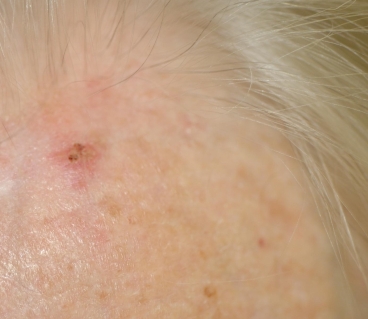How can I live better with actinic keratosis?

Actinic keratosis is a lesion that forms on skin damaged by repeated unprotected exposure to the sun's ultraviolet (UV) rays or the artificial UV rays of tanning booths. It generally appears as a small patch of dry, crusty skin, rough to the touch, on the areas most exposed to the sun: face, scalp for bald people, and back of hands. Their color can vary from red to brown, white or pink. These lesions represent a risk factor for the development of skin cancer, and require regular dermatological treatment and specific care.
Simple everyday gestures
Year-round sun protection
Why?
To limit the risk of aggravating lesions and prevent further sun damage.
How?
Seek shade, especially between 11 a.m. and 4 p.m.
Wear protective clothing and a hat.
Apply a sun cream with a high photoprotection factor (SPF50+) daily to exposed areas, even on cloudy days. There are products specifically adapted to the needs of skin prone to actinic keratoses.
Monitoring progress
Why?
Regular monitoring of actinic keratoses is recommended to detect any transformation into a cancerous lesion. If detected early, actinic keratoses can be treated before they turn into skin cancer.
How?
- Consult a dermatologist regularly (once a year).
- Perform a skin self-examination every month, and consult a doctor as soon as the lesion progresses or new spots appear.
Use appropriate make-up
Why?
To camouflage stains if they are a nuisance.
How?
Apply make-up specifically developed for sensitive skin, without fragrance or preservatives.
Green-tinted correctors effectively neutralize localized skin imperfections and mask redness.
Consider vitamin D supplementation
Why?
Exposure of the skin to UV rays is necessary for the natural synthesis of vitamin D, essential for strong bones and a healthy immune system. In the case of actinic keratosis, UV protection must be strict on a daily basis, and can lead to vitamin D deficiency.
How?
Consult a physician for screening and prescription of supplements if necessary.

What is the origin of actinic keratosis?
Actinic keratoses are mainly caused by excessive, repeated and unprotected exposure to ultraviolet (UV) rays. These rays have the ability to induce damage to the DNA of skin cells, leading to their abnormal and uncontrolled proliferation, the cause of actinic keratoses.
The sun is recognized as the main cause of actinic keratosis lesions. Occupations and activities associated with high daily exposure to the sun are at increased risk of developing actinic keratosis.
However, the appearance of these lesions requires chronic exposure over several years, which explains why they are generally observed in older people. Individuals with a light phototype (fair skin, blond or red hair, blue eyes, freckles) tan with difficulty and sunburn easily, increasing their risk of developing actinic keratoses, and potentially skin cancer.
Related products
Doctor's stamp
Want to read on?
This access is reserved for professionals, registered on Pierre Fabre For Med.
To access the full content, please register or log in if you already have an account.